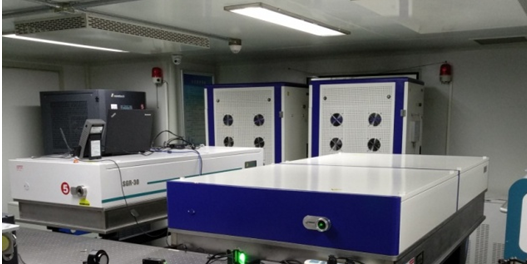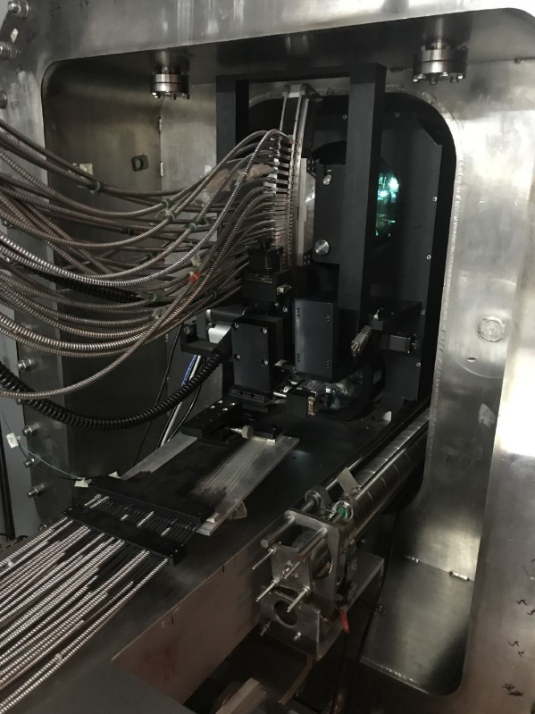
China has realized the world's highest frequency Thomson scattering diagnostic with single laser as it had passed its acceptance test very recently, according to the research team with Institute of Plasma Physics, Hefei Institutes of Physical Science.
The newly developed diagnostic system could realize simultaneous measurement of plasma electron temperature (Te) and density (ne) in 4 kHz YAG laser UHF mode (10 pulses) and 100 Hz YAG laser continuous mode. Up to now, it is the world's highest frequency Thomson scattering diagnostic with single laser.
Te and ne profile are important parameters for the fusion devices as well as physics research. Laser Thomson Scattering Diagnosis obtains the experimental data of Te and ne by the shape and intensity of the scattering spectrum of electrons under the action of laser, respectively, which already had been recognized as most reliable diagnostic to get Te and ne by world due to its simple principle.
At the same time, It is also a diagnostic tool for priority development of fusion devices across the world, including ITER, Since Thomson scattering diagnostic needs to analyze the scattering spectrum of photon produced by laser and electronic in magnitude nanosecond time, which is considered as one of the most difficult diagnoses in fusion plasma physics research, this diagnostic system is in very high demand for laser and detection technology on weak and fast signal. Unfortunately, only a few countries have the capability to conduct such kind of researches.
For EAST, with high parameter and long pulse as its target, electron temperature above 100 million degrees must be accurately measured by Thomson scattering diagnostic, but the electron scattering spectrum is pretty wider and weaker than usual.
In order to obtain high-precision signal, the system laser and detector have to make higher requirements to consider fast physical processes and to maintain a stable running time of over 1000 seconds.
To face the challenge, the team has continuously focused on laser and detection technology, and managed to develop the Thomson scattering diagnosis system with ultra-high spatial and temporal resolution.
Moreover, the research team put forward a series of pulse method and carried out technical research, and obtained a distinctive 4kHz/3J YAG pulse laser. By solving the beam split of high performance scattering light, detection of Infrared weak fast signal, high-speed acquisition, high efficiency laser transmission and automatic collimation key technical problems, the system had implemented in the EAST device for the Whole-space measurement of electron temperature density distribution with space 45 points, the highest time resolution of 250 μS, high spatial resolution of 3 mm , electron temperature and density error respectively less than 10% and 15% . This marks the highest frequency YAG Thomson scattering diagnostic system realized by one laser device in the world
Meanwhile, the system performed so well in other main technical indicators, especially the 4kHz high power laser has far exceeded the tens of Hertz which commonly used in mainstream devices and the 300Hz laser being developed for ITER.
This work was supported by "Dynamic Response of Key Distribution Parameters of Plasma to External Power on EAST", "Fine structure of boundary transport barrier under H-mode on EAST" of the National magnetic confinement nuclear fusion energy development research project and National Nature Science Foundation Project. It has been successfully implemented and provided important data support for 100 seconds H-mode discharge on EAST and 10keV Te of plasma discharge, etc.

High Frequency and High Energy YAG Laser (Image by HU Ailan)

Signal Collection System (Image by HU Ailan)

86-10-68597521 (day)
86-10-68597289 (night)

52 Sanlihe Rd., Xicheng District,
Beijing, China (100864)

